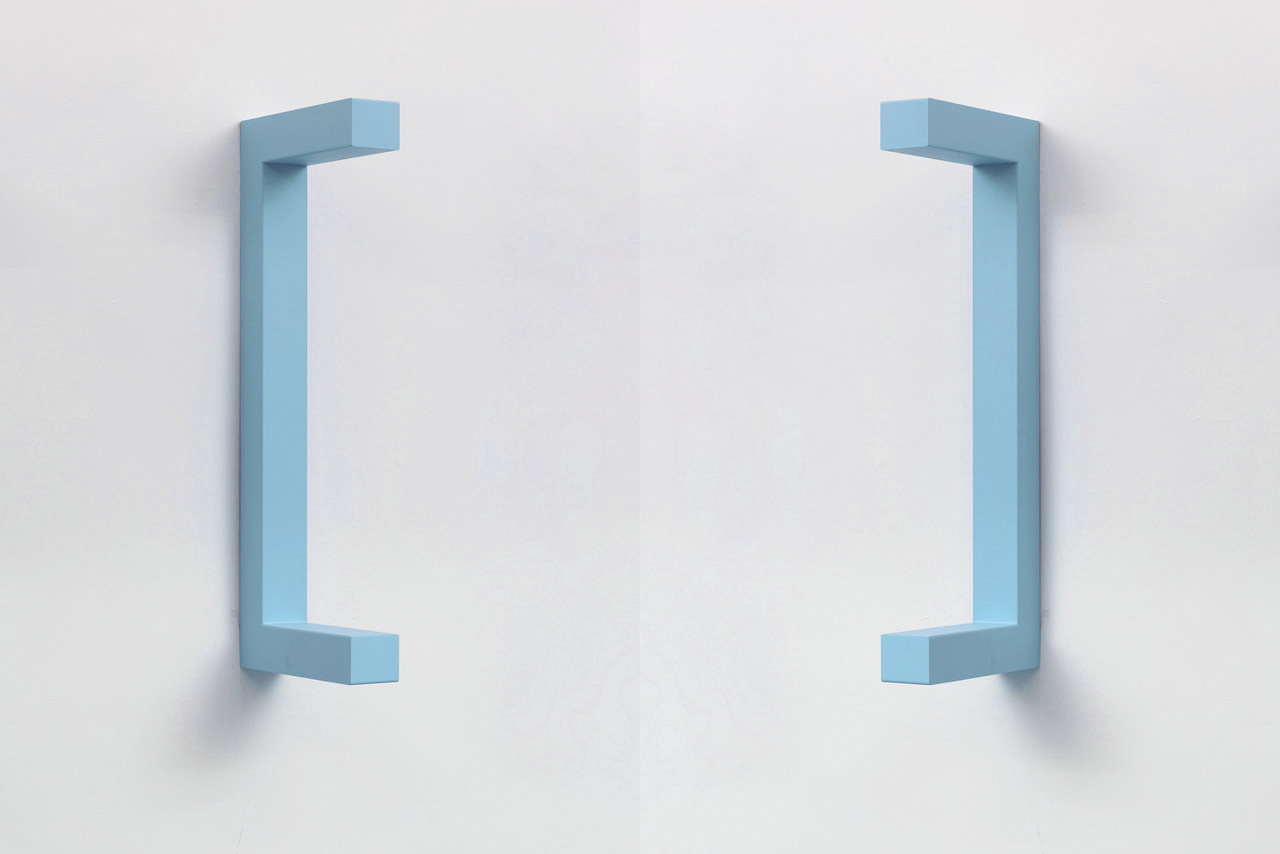Jonathan Monk, "We Are Here..."
More about the artist
Nous sommes ici...
Quelquefois, le fil de notre lecture est rompu par des crochets aux angles vifs. Souvent, ils enferment trois points de suspension, ils signalent alors que le texte, la citation, est raccourcie, les mots ou les phrases manquant.e.s disparaissent dans l'espace ainsi tracé.
Quand les points de suspension cèdent leur place à un mot, un nom, les crochets signalent alors qu'un mot a été substitué à un autre. Le plus souvent pour faciliter la compréhension du texte, ou pour le préciser.
Dans tous les cas, les crochets signalent l'intervention d'un auteur extérieur au texte d'origine. Les crochets redéfinissent le texte donné, créent un espace supplémentaire, un regard, un commentaire, entre le lecteur et l'auteur du premier texte. Ils "ouvrent" le texte, signalent l'appropriation, le découpent ou le transforment, dans un geste qui peut être de respect ou, à l'inverse, de mépris.
Parfois, les oeuvres d'art agissent comme ces crochets, elles ouvrent un espace dans un lieu donné, musée, galerie ou demeure. Elles ouvrent dans un espace culturel connu (c'est à dire toujours lié à une culture donnée) un espace singulier, original, ou même étrange. Dans tous les cas, un espace de réflexion, un espace supplémentaire entre la culture et le spectateur, entre nous et notre propre culture. Nous sommes ici, en terrain connu, en lieu commun, et déjà ailleurs, par la grâce de l'oeuvre.
We Are Here...
Sometimes the thread of our reading is broken by brackets at sharp angles. Often, they enclose three suspension points, indicating that the text, the quotation, has been shortened, the missing words or sentences disappear in the space thus traced.
When the suspension points give way to a word or a name, the square brackets indicate that one word has been substituted for another. Most often to make the text easier to understand, or to make it more precise.
In all cases, the square brackets indicate the intervention of an author outside the original text. The square brackets redefine the given text, creating an additional space, a glance, a comment, between the reader and the author of the first text. They "open" the text, signal the appropriation, cut it out or transform it, in a gesture that can be one of respect or, conversely, of contempt.
Sometimes artworks act like these square brackets, they open a space in a given place, museum, gallery or home. They open in a known cultural space (i.e. always linked to a given culture) a singular, original, even strange space. In all cases, a space for reflection, an additional space between culture and the spectator, between us and our own culture. We are here, on familiar territory, in a common place, and already elsewhere, through the grace of the artwork.











